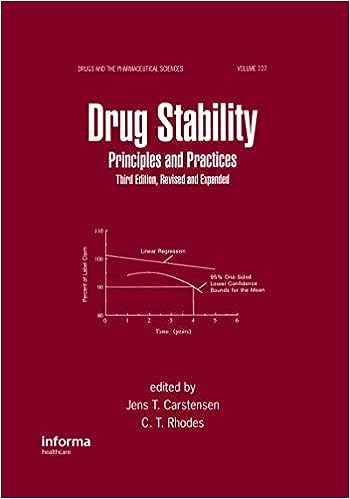StabilityStudies.in
Procedure for Developing a Stability-Indicating Method for Pharmaceuticals
1) Purpose
The purpose of this SOP is to provide a standardized procedure for developing a stability-indicating method to detect the degradation products and measure the potency of pharmaceuticals over time.
2) Scope
This SOP applies to all drug substances and products that require stability-indicating methods for their analysis. It is relevant for personnel in quality control, research and development, and regulatory affairs departments.
3) Responsibilities
The responsibilities for establishing a stability-indicating method are as follows:
- Quality Control Team: To validate the stability-indicating method and perform routine analysis.
- R&D Team: To develop the
method and ensure its robustness and accuracy.
Regulatory Affairs Team: To ensure the method meets regulatory requirements for stability testing.
Stability Study Coordinator: To manage method development, validation, and implementation processes.
4) Procedure
The detailed stepwise procedure for establishing a stability-indicating method is
outlined below:- Method Development:
- 4.1 Define the purpose, scope, and objective of the stability-indicating method.
- 4.2 Identify the drug substance or product and the critical quality attributes (CQAs) to be monitored.
- 4.3 Select an appropriate analytical technique (e.g., HPLC, GC, LC-MS) for the method development.
- 4.4 Develop the method by optimizing parameters such as mobile phase, column type, flow rate, and detection wavelength.
- 4.5 Conduct preliminary experiments to assess the method’s ability to separate degradation products from the active ingredient.
- Method Validation:
- 4.6 Validate the method according to ICH guidelines for parameters like specificity, accuracy, precision, linearity, range, and robustness.
- 4.7 Perform forced degradation studies to confirm the method’s ability to indicate stability and detect degradation products.
- 4.8 Document all validation experiments, data, and results in a validation report.
- Method Implementation:
- 4.9 Implement the validated method in routine stability testing.
- 4.10 Train relevant personnel on the use of the method and ensure compliance with standard procedures.
- 4.11 Monitor the method’s performance during routine use and make adjustments if necessary.
- Documentation and Reporting:
- 4.12 Compile a comprehensive report on method development, validation, and implementation, including objectives, methods, results, and conclusions.
- 4.13 Ensure the report is reviewed and approved by relevant stakeholders.
- 4.14 Submit the report to regulatory bodies or internal stakeholders as required.
- Review and Update:
- 4.15 Regularly review the stability-indicating method and update it based on new data or regulatory changes.
- 4.16 Archive the approved method development and validation report in a controlled document management system.
5) Abbreviations, if any
- HPLC: High-Performance Liquid Chromatography
- GC: Gas Chromatography
- LC-MS: Liquid Chromatography-Mass Spectrometry
- CQA: Critical Quality Attribute
6) Documents, if any
- Stability-Indicating Method Validation Report
- Method Development and Validation Protocol
- Analytical Method Transfer Report
7) Reference, if any
- ICH Q2(R1): Validation of Analytical Procedures
8) SOP Version
Version 1.0
StabilityStudies.in
